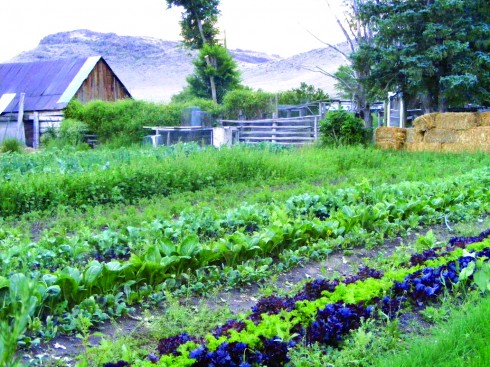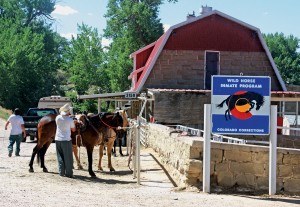by Bill Hatcher
I mean, how hard could it be? You take some seeds, you put them in the ground, add a little water, make sure they get plenty of sun, and voila! Instant veggies for garnishing every meal! Maybe give a few to friends. Maybe even sell some at the local farmer’s market.
That was back in March. And now, well, I guess my little experiment in gardening now looks more like an attempt made by early hunter-gatherers. But thank God there are several intrepid local farmers willing to provide the rest of us poor Neanderthals with some of their sunshine-fresh bounty.

As you may know, locally-grown commercial foods are making a comeback. Historically, 90% of the American labor force was involved in farming in 1800, a figure which had already shrunk to 31% by 1900. The farming population dwindled even more quickly after the Second World War when innovations in artificial crop nutrients, pesticides and other technological breakthroughs enabled very few to accomplish the work of many. Nowadays, less than 2% of the U.S. population produces enough food to sate the appetites of everyone in the nation (310,000,000), plus enough to sell or give away to other countries, to feed livestock, and turn into an assortment of consumer goods.
But even so, in 1994 there were still almost 1,700 outdoor markets in the United States, most purveying organic, locally-grown fruits and vegetables. By 2009, that number had magically ripened to more than 5,300 such venues being held daily, weekly, or seasonally across the land; over a 300% increase in the availability of locally-grown, natural or organic foods.
So after taking in all these stats, it got me to thinking: Why the resurgence in homegrown, or at least hometown-grown foods? After all, they ain’t exactly cheap, you know.
To find my answer and get an overall sense of the local food industry, I went to Liza Marron, one of the founders of the Saguache Community Garden and co-chair of the SLV Local Foods Coalition. Liza came to the Valley in 1988 as a ranch hand, hired to work on the High Meadows Buffalo Ranch in Center, Colorado After a few seasons there, she shifted gears and began working on potato harvests at Perrin Farms and then Green Earth Farm in Saguache, often trucking vegetables to markets on the Front Range. Now a community organizer working to support farm-to-table initiatives in the area, Liza coordinates the LiveWell program at Valley-Wide Health Systems. This program is part of a statewide obesity prevention initiative designed to increase access to healthy foods for residents of the San Luis Valley.
When I asked Liza why she thought we might be hearing more about local foods these days, I expected her to say something about the role of government subsidies. You can probably imagine how such deep-pocketed financial backing encourages big agribusinesses to saturate farmland with chemical fertilizers and toxic cocktails, eliminating the need for more costly hands-on labor. And she did talk about that, but not before emphasizing something I hadn’t expected; that consumers see local-food markets as a means of “going back to an older wisdom, where people have a connection with the food they eat, from the seed in the earth to the bounty of harvest.” She went on to say how people are beginning to realize that because they no longer know where their food is coming from or who’s responsible for growing it, they’ve lost touch with something important, something essential and human.
As for subsidies, Liza commented that while we may hear something almost daily about health care reform and its namesake bill, “no one really knows anything about the Farm Bill” which goes along quietly unnoticed, though heavily used, every day. This epic legislation, which helped to feed our quickly-expanding population, encouraged herbicides, nitrogen phosphates and all the rest. And it worked. In fact, it worked so well that today we live in an economy anathema to the practices of early-20th century ‘Fordism.’ Hard to believe now, but Henry Ford actually believed in paying workers a decent wage, thereby contributing to a stronger economy and society. Today, employees who work for multi-national companies and fast-food chains – at least those on the lower rungs of the ladder – are tossed pittances on which to survive. The only option left to folks like this is to buy chemically-laced foods, resulting in individual health issues which contribute to the current social and health care pandemic. Convincingly, Liza stresses, “People are tired of being sick, tired of ‘consumerizing.’ People are miserable and stressed out,” suggesting that what we put into our bodies plays a big part in our overall condition – physical, emotional, spiritual. Local foods, then, are about a relationship with the land, with our integrity and ethics; with ourselves. It’s about supporting a way of life and investing in a healthy culture as much as it is about the food itself.
So when I asked Liza what she thinks is stopping people from buying even more local healthy foods than they already do, I’d expected her to flatly confirm my suspicion about cost. And while she did acknowledge that as a powerful factor, she said that the most important factor – in the SLV, at least – is convenience. Many of us know that one of the greatest privileges of living in rural Colorado, and the SLV in particular, is that beautiful, double-edged sword called “remote living.” And whatever that may mean to different individuals, when it comes to food, it results in more planning, fuel and the cash involved in meeting one’s requirements. While there are dozens of local farmers in the Valley alone, distribution is one of the main problems. Lots of ideas for solving it have been offered, as yet with no clear winner.
One possible solution may eventually look like something being tried in Chaffee County. Farmer’s market organizer Lindsay Diamond works with the market in Buena Vista, and has recently started the Colorado Local Online Farmers Market at www.colocalmarket.com. Customers using this website are able order produce and meet at a pick-up point hosted by a driver when it arrives. This service has expanded to cover both Chaffee and Saguache Counties.
Whatever solution is eventually chosen, it will be one with sound practical justification. In a recent snowbound episode, all passes leading into the Valley were closed. In three days the shelves at City Market in Alamosa were emptied. Having no local options makes an area like the San Luis Valley vulnerable to such sudden crises. And since many local foods can be frozen and canned just like conventional goods, consumers would be able to find much of what they need in the off-seasons, too.
Still another possibility can be found in the new grocery store Ploughboy, located across from Safeway in Salida. They deal strictly in organically-grown foods farmed within a 100-mile radius. Although this requirement makes farms in the Alamosa area ineligible, it does include several farms operating in Saguache County. Businesses like Ploughboy and the farms that supply it contribute to the local economy and may be part of the next step in making local foods more easily available.
With all that said, my wife, Kim, and I ended up visiting the Salida farmer’s market last Saturday. We bought some tomatoes, onions, and bok choy, but also some homemade pastas, salsa, and breakfast burritos. Since we’ve been trying to grow the vegetable portion of this list, it’s always humbling and brings a sense of gratefulness to those sultans of the soil, gurus of the garden; our neighbors. It was fun to see the variety of foods, but also peruse the artwork, hear the acoustic music, and discover who came out ahead in the prune-seed spitting contest. And so we shopped and talked and were reminded of things green and alive.
Whether you’re mostly a farmer or strictly an eater, here are a few resources to use for learning more about locally-grown foods.
San Luis Valley Local Foods Coalition at: slvlocalfoods@gmail.com
Central Colorado Foodshed Alliance: www.ccfa.coop
Ranches, farms and services located on conservation easements:
www.bountifulconservation.com



There is nothing like the gratification of collaborating with Mother Nature by poking a seed in the earth, nurturing it, protecting it from weeds and predators and saying a little prayer along the way for the rain to come and then finally pulling a rich gift from the soil and preparing it for dinner with products from your friends who have done the same. It is food with integrity and nutrients and mystery and heart….Food – “God’s love made edible….” she said